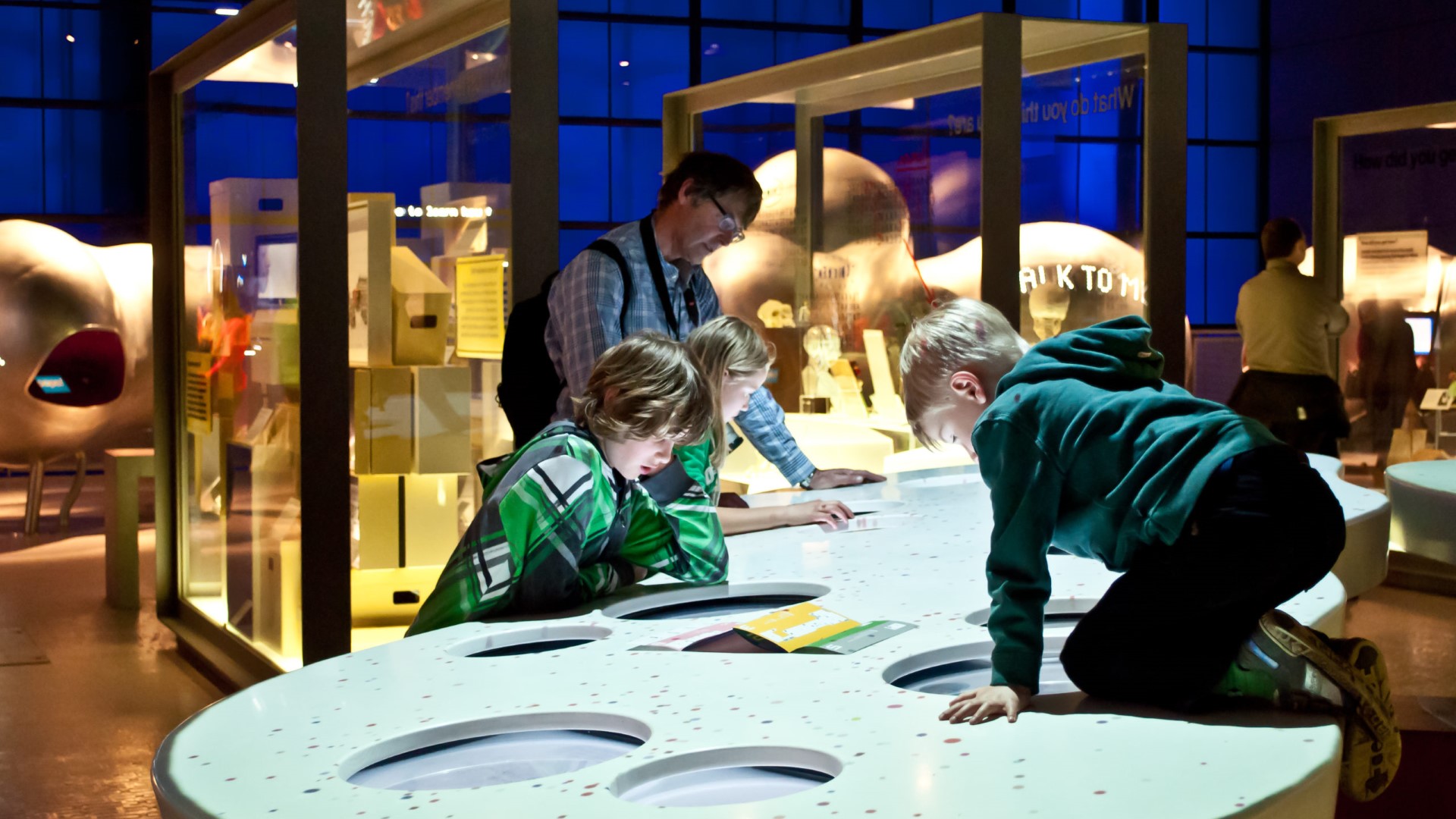Experiment at the Science Museum
London’s Science Museum has been attracting visitors of all ages for more than 150 years. This fascinating attraction is home to more than 300,000 items covering anything from robotics to space exploration.
Highlights
- Discover one of the earliest computer prototypes: the Analytical Machine built in 1871.
- See with your own eyes what an iron lung looked like – an invention that saved many lives!
- Get up close to the spacesuit used by the first British astronaut to go into space.
What to see and do
Dozens of the Science Museum exhibits are fully interactive and offer an interesting way of discovering how the world around you works. The main galleries include:
The Wellcome Wing
An impressively designed gallery that is home to one of the world’s biggest collections of medical artefacts. Here you can explore 500 years of medical history through fully immersive experiences.
The Winton Gallery
Get ready to see mathematics in action like never before. This inspirational gallery will show you how maths has been used to create the world and many of the objects and amenities we now use daily.
Exploring Space
This gallery takes you on a walk through the space age, bringing to life everything from satellites to rockets. There’s also a full-sized replica of a spacecraft so you can experience what it’s like to be an astronaut for a day.
The Information Age Gallery
Throughout its six rooms, this gallery enables the interactive discovery of technology and communications over the past 200 years. Among its more than 800 objects you’ll find some of the earliest TV models, the BBC’s first radio transmitter, and African talking drums.
The Linbury Gallery
Also known as Science City, this gallery takes you on a voyage through the scientific discoveries that transformed the city of London between the 16th and 19th centuries.
Flight
Built as a giant hangar, this gallery taps into the human desire to build flying machines and shows you how the dream became a reality. You won’t want to miss the Discovery Motion Theatre, where you can head on a 3D trip to the moon on the Apollo mission.
Making The Modern World
This brilliant display showcases some of the most important objects in the recent history of humanity, from the first computer created by Apple to DNA models, the command module of the spaceship that landed on the Moon, and a batch of the first penicillin ever discovered.
Clockmaker’s Museum
A museum within a museum – this gallery is home to one of the world’s oldest collections of timepieces. Take a tour of more than 1,000 clocks and watches going from the early 1600s to modern wristwatches.
Who Am I?
Visit this fascinating gallery to find out what it means to be human. Here you can explore language, and personality, and even take a sneak peek into the future and see what genes hold in store for you.
Did you know: (5 interesting facts!)
- The Science Museum was first housed in the space that’s now home to the Victoria and Albert Museum.
- It’s the 6th most visited museum in the British capital.
- It was the first London museum to open a gallery for children back in 1931.
- The museum is home to one of the oldest clock mechanisms in the world, dating from the 14th century.
- The medical galleries at the Science Museum are the largest in the world.
History
- 1857 – The Museum opened its doors under the name of South Kensington Museum.
- 1832 – Part of the exhibits are moved to Exhibition Road, where the museum is today.
- 1928 – The East Block building is added to the museum.
- 1969 – The Centre block building is completed, replacing those built in the 19th century.
- 2000 – The Wellcome Wing opens and is inaugurated by Queen Elizabeth.
Facilities and accessibility
If you are looking to top up your energy after a tour of the museum, you have several options to choose from. Three cafes are serving light refreshments: the Basement Cafe, the Gallery Cafe (which also offers vegetarian fare), and the Energy Cafe.
For an ice cream or milkshake treat, you can head to the Shake Bar. And the museum’s family restaurant, called The Diner, is perfect for a seated lunch. There are also designated picnic areas where you can enjoy an outdoor lunch.
Other facilities include a gift shop and a cloakroom.
The museum offers dedicated disabled parking spaces, as well as wheelchair-accessible lifts and bathrooms. Wheelchairs can be borrowed from the Information Desk.
The venue can accommodate the needs of deaf, hard of hearing, and visually impaired visitors, as it offers subtitled videos, induction loops, Braille-labelled buttons, tactile maps, audio announcements, and audio-described tours run by volunteers. There’s also a dedicated app that provides audio descriptions of key exhibits and objects.
Registered service animals are allowed into the museum.
The Science Museum is conveniently located in the heart of London, barely half a mile from two underground stations.
